5 minutes with… José De Carvalho, Head of Search
October 19, 2020 •Sorcha OBoyle

José De Carvalho is more2’s Head of Search and is a wizard in all things PPC. As the shift to online channels continues and consumers prepare for one of the strangest Christmas seasons in living memory, Search campaigns will form the cornerstone for D2C marketing teams. We caught up with José to learn how direct brands can optimise their performance marketing strategies for success.

(Picture the scene: José is at home, calling from his newborn daughter’s bedroom – everything is pink, including the feathery lampshade and the toy rabbit sitting on top of the wardrobe.)
Q: Let’s start with the basics: what’s the most common mistake you see brands making when it comes to their PPC?
A: The best way to think about PPC is to imagine it as your shop window. Brands can forget that PPC, although low-funnel, is a marketing channel and should be used both for branding and driving traffic. People who are actively searching are displaying high intent to buy so it’s important to keep your campaigns fresh with up-to-date audience feeds.
My biggest bugbear is when brands don’t bid on their own brand keywords when there is a clear need for it. More often than not, you’ll have retailers bidding on your brand and products so if you’re not competing for the space, your direct traffic or organic presence will miss out on searches, be they from new or existing customers.
Think of brand PPC as a display in a bricks and mortar shop – use it to entice people in with tailored messages about your USPs that are targeted to your specific audiences. That’s where PPC is at its most powerful.
Q: What messages should brands communicate to their customers?
A: Gifting propositions and delivery times are extremely important. Test both and see which works best – we found that highlighting fast, free delivery, free returns and next-day delivery worked best during the first lockdown so I’d expect that to perform well again. I also believe that last-minute shopping will be subdued compared to 2019 and people will start purchasing earlier. The most important thing is that you humanise your marketing and your messaging so you’re communicating meaningfully with your potential and existing customers about things they care about and on the channels they prefer.
Q: Brands have been forced to pivot to digital channels this year – how will this impact on spend and competition?
A: Many brands rely on retailers when they start out and when they’re building their brand presence. Because their commercial models are different, retailers can afford to sell those products at a lower price than the brand can as they work to different margins and AOVs. This hasn’t changed so brands have to acquire online market share from competitors and also from their own retailers. This will mean an increase in online spend and brands will need to find innovative and cheaper ways to promote their products.
Q: How can small brands compete with big, established retailers who have deeper pockets and bigger teams?
A: Focus on quality over quantity. When you understand your existing customers and your target demographics, you can focus on marketing through the specific channels that your customers and prospects use. Using first party data correctly will be key to unlocking audience pools when you’re competing for expensive traffic so keeping your audience feeds up to date should be a priority.
Q: If you were leading a brand-side search team right now, what two areas would you focus your time on and why?
A: First party data integration and revenue attribution. In choppy times like these, you can never have too much data. The more you know, the more informed and the more efficient your decision-making will be. I might sound like a broken record but the best way to acquire new customers at volume is by utilising your first party data effectively.
Attributing your revenue is more important than ever but as we know, no single platform will give you an unbiased answer. Google Analytics will always favour Google so I’d recommend having at least 2 (and preferably 3) analytical platforms so you can triangulate your data and get a more unbiased version of the truth when you’re making budget decisions. It may feel like you’re being overloaded with data but once you know what to look for, you can never have too much info. Brands need to use their first party data efficiently to gain new clients.
Q: How can smaller brands harness Google’s AI to do the hard work for them whilst remaining efficient?
A: When you rely on Google’s AI to make decisions, you need to ensure you’re feeding it as much data as possible so tracking is key, as is revenue attribution as I’ve already said. Test ROAS and CPA models to really push your campaigns as much as possible – by their nature, Search teams love tinkering with campaign setups and models so they’ll find it interesting to see how far they can push a campaign within your customer economics.
And make sure that all your traffic is using some kind of audience feed so the AI can continue to learn. I’d never rely completely on Google’s bidding platform (you need your information to be as unbiased as possible) so use those alternative analytics platforms to make sure you understand where your revenue is coming from and what’s driving it. You should always be able to prove the incrementality of your Search activity, especially during peak.
Q: How should brands prepare their search budgets this year? Is it best to spend aggressively early in peak or to hold some funds back for the end of November?
A: I don’t think aggressive spending is the right phrase here. In the UK, Black Friday is a title for a sale period and not a specific date. Over the past few years, most brands have approached Black Friday as a week of sales and this year will be even more competitive. But it’s not a case of blanket discounting, brands need to consider the loss of sale margin versus the opportunity for growing their market share. We’ve found that starting earlier has given us better results but it’s more complicated than that. If you’re running performance campaigns, your spend should never be capped. Aggressive spending simply means that you are willing to lower your ROAS or increase your CPA targeting over a certain period. The date you start is entirely up to the brand and your margin.
That said, you have to be flexible with your budgets, more so now than ever. We can’t predict exactly how customers will behave during peak this year so you should be running brand campaigns alongside your target campaigns – although the initial CPA won’t be as good, you’ll be front of mind when customers decide they’re ready to buy.
We worked with a client this summer whose peak is when kids go back to school. Given the uncertainty around schools reopening, we took the long-term approach and, instead of starting heavy search campaigns in mid-July like we usually would, we started them in June. When the announcement came that the schools would re-open, the brand search index rose to its highest of 100%. In August 2020, PPC alone drove almost 80% the brand’s total digital revenue generated during the same period last year for a similar cost.
That brand was willing to lower their margins over the summer and knew how long they could afford to wait to break even so they were in the best position possible when customers decided to buy.
Q: Working from home can make it harder for teams to support each other, especially during challenging times like peak (which is an endurance events even at the best of times!). How can managers support their search teams remotely and help them deliver the best performance they can?
A: I’m an advocate of remote working and have been for many years. PPC is not bound to 9-5 which means there have been many weekends and late nights in my career so I give my team the freedom to set their own schedules. Trusting my team is key. I trust they will put in the work to make the accounts run at their best, whether they are tweaking bids at 4am or changing ad copy in a beach somewhere exotic (travel restrictions permitting) – as long as they are available to the client and there to support their team, I’m all for it. To be honest, 80% of the time, they’re working 9-5 naturally, it just works out that way. And our regular check-ins become more human rather than purely business focussed.
About José

